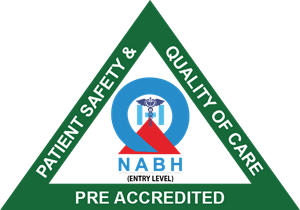Lasik / Refractive Surgeries
Lasik
Types of Lasik Treatments
When is Lasik recommended?
Precautions to take for Lasik Treatment

Refractive Surgery
- Zyoptix
- Femto-LASIK
- PRK
- FLEx
- SMILE (Small Incision Lenticular Extraction).
- Phakic IOC

What is Lasik?
TYPES OF LASIK
CONVENTIONAL LASIK SURGERY
It corrects only spectacle number but does not correct any other distortion.
OPTIMIZED LASIK SURGERY
It corrects spectacle number and optimized correction of distortions to maintain a prolate natural like cornea, thus giving better vision at night and dim illumination.
Wavefront-optimized LASIK, is an enhanced version of conventional LASIK. It does not address pre-operative HOAs, but the laser ablation is adjusted, based on the patient’s eye glasses prescription, to minimize any increase in spherical aberration induced by the treatment.
So whereas the goal of wavefront-guided LASIK is to identify and treat multiple HOAs (including spherical aberration) and refractive error during the corneal reshaping of the eye, the goal of wavefront-optimized LASIK is only to limit any increase in spherical aberration during the treatment of refractive error by the laser.

What Is Custom Lasik?
Epi-LASIK is a newer laser eye surgery procedure that was developed to solve some of the potential problems with LASIK and LASEK. It’s somewhat of a cross between the two, but differs in a few key areas. With advent of Intralase Bladefree technique Epi-lasik is now obsolete
OTHER REFRACTIVE SURGERIES
Myopia
Hypermetropia
Why Go For Custom Lasik Procedure As Compared To Conventional Lasik?
Intralase Lasik – Bladeless Or Blade Free Lasik
Intralase is a 100% Blade – free approach using ultra high precision Femtosecond Laser for creating the corneal flap with more safety and accuracy. By eliminating the hand held Microkeratome blade used in traditional LASIK for corneal flap creation, patients enjoy highest level of safety. With Intralase, using a computer controlled laser the surgeon delivers rapid pulses of light to a pre-programmed depth and position within the cornea. Also Intralase is able to treat patients with thin corneas which otherwise would have been turned down for Blade assisted LASIK.
Presbyopic Lasik
Presbyopia-test1PreLEX treatment (Presbyopic Refractive Lens Exchange) is a lens replacement procedure wherein the natural lens is replaced with a multi-focal intra-ocular lens implant. This is done to improve vision for those generally above the age of 40, as it is after this age that one’s eye sight begins to naturally become weak—causing blurred near vision while reading or working at the computer, or blurred far vision when looking at something from a distance.
PREOPERATIVE TESTING
ICL (Implantable Collamer Lenses)
ICL are an alternative to LASIK and PRK eye surgery for severe myopia (nearsightedness)or high hypermetropia ( far sightedness) or in cases with very thin cornea where LASIK is contraindicated, and in some cases produce better and more predictable vision outcomes than laser refractive surgery. ICLs are clear implantable lenses that are surgically placed either between the the iris and natural lens without removing the natural lens. ICLs enable light to focus properly on the retina for clearer vision without corrective eyewear. Surgery is minimally invasive day care procedure which is very safe.

ICL Vs Contact Lenses

Implantable lenses function like contact lenses to correct the eye power. The difference is that ICLs work from within your eye instead of sitting on the surface of your eye. ICLs offer a permanent correction , where as contact lenses are temporary and need daily wear and removal. Unlike contact lenses, you can’t feel a phakic intraocular lens in your eye (much like you don’t feel a dental filling for a cavity) and, apart from regular eye exams, ICLs typically do not require any maintenance.
ICLs Vs. LASIK Eye Surgery
- LASIK, which uses a computer-controlled laser to reshape the cornea, is the most popular refractive surgery to correct myopia, hyperopia and astigmatism, in part due to continual technological advancements such as wavefront custom LASIK and femtosecond laser technology.
- Not everyone is a candidate for LASIK, though. Contraindications to LASIK surgery include: a very high degree of myopia having a cornea that is too thin or irregular in shape; eye conditions such as keratoconus; and chronic dry eyes.
- ICL is an additive procedure whereas LASIK is an substractive procedure

